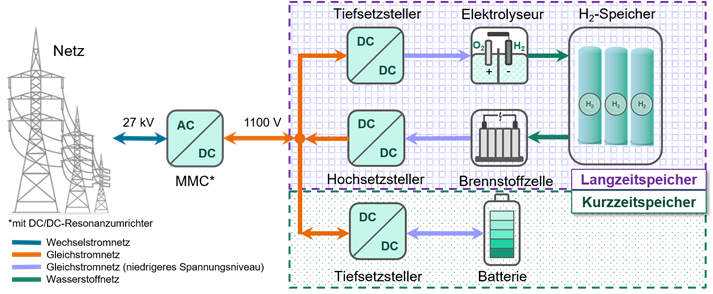For the energy transition to succeed, battery storage is required to bridge energy differences between production and consumption in the hourly range and to provide balancing power. In addition, hydrogen or methane gas storage is needed as an energy reserve for times when there is not enough renewable energy available for days and weeks. Both storage systems have in common that they require a relatively low DC voltage (in the range of a few hundred volts) for storage (battery charging, electrolysis) and for removal (battery discharging, fuel cells, etc.). This leads to the task of bidirectionally converting grid-relevant power of up to 600 MW using the transmission grid connection voltage (110kV, 220 kV or 380 kV) into this low direct voltage. The storage power plant should have sufficient reserves to bridge the so-called "brown out", i.e. a decrease in available electrical power in a region due to a lack of sun or wind for a period of up to 14 days.

Simulations and theoretical design
The research focus to date has been on the use of the MMC as a drive and grid side inverter. This has already involved many simulations that can be extended and adapted to include the additional inverter components in the theoretical design of a high power inverter. System design and further implementation of novel ideas into the simulations will lead to shorter development time and better integration.
Participating departments of the BTU
Chair of Power Electronics and Drive SystemsHead of Chair
Prof. Dr.-Ing. Georg Moehlenkamp
